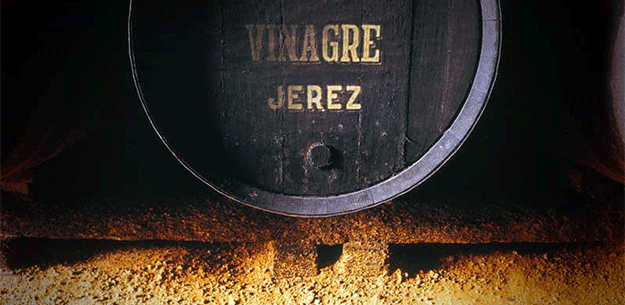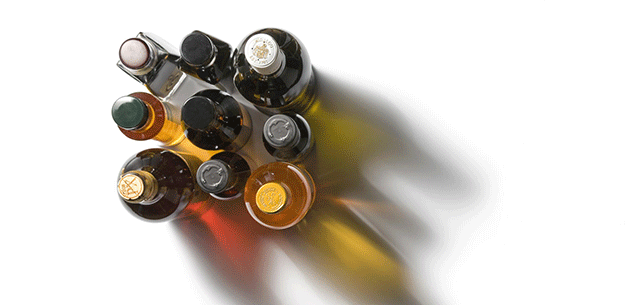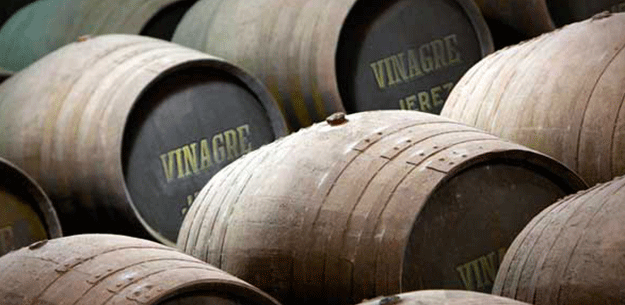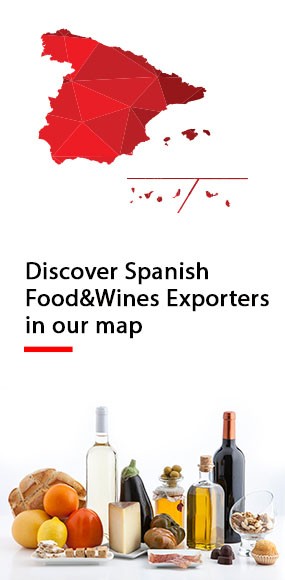.png.transform/rendition-xs/image_image%20(1).png)
Spanish Vinegar’s Sweet Spots
Originally attributed to an error in the winemaking process, wine vinegar was referred to by the Romans as “vinum acre”, or sour wine. For centuries these aromatic liquids have been lending their pungent and complex aromas to Spain’s gastronomy. They continue to do so today, particularly in those areas where their traditional elaboration is protected by a Designation of Origin status.

The average Spaniard consumes between 1.4 and 2 liters of vinegar a year; on salads, in typical dishes such as gazpacho, in the huge variety of Spanish encurtidos, or pickled vegetables, and as an aromatic element in both traditional and avant-garde cuisine prepared by the country’s top chefs. Indications are that today’s Spaniards are consuming better quality vinegars then ever. Of course finding quality vinegar is hardly a challenge here in Spain, as this country holds claim to three of the five types of vinegar in Europe to be protected by a Designation of Origin classification:
DO Vinagre de Jerez ,DO Vinagre de Condado de Huelva and DO Vinagre de Montilla-Moriles. This fact, combined with the centuries-old tradition of producing and selling these products, make finding excellent gourmet vinegar in Spain an easy task. Fortunately, Spain’s booming business in exporting vinegars means that getting your hands on these exquisite products throughout the world has never been easier.
From the vine to wine to vinegar

The production of wine vinegar in Spain is centered in Andalusia, a place known throughout the world for its wonderful sherries, including crisp manzanillas, nutty olorosos and sumptuous Pedro Ximénez fortified wines. Here, the historic trajectories of wine and vinegar go hand in hand, making it fitting that this is the home of vinegar’s three Designations of Origin, each inextricably linked to the wine producing region of the same name. All the varieties of vinegar produced under these designations must be made from the correspondingly protected wines, and the products often share the same installations, barrels and age-old techniques that have bestowed special aromatic characteristics on these wines and vinegars for centuries.
Perhaps the most significant of these techniques involves the aging method used for vinegars from all three regions. This process, known as criaderas (nurseries) and soleras (floors), is also traditionally used for sherry wines. The technique involves aging the vinegars in rows of barrels that are stacked on top of each other in pyramid fashion. The bottom row, or solera, contains the oldest vinegar, from which a portion is taken and bottled. As this happens, the same amount of vinegar from each of the higher casks, or criaderas, is moved to the barrel below it, and new vinegar is added to the barrels in the top row.
Sherry vinegars

Renowned for its wines, the region of Jeréz is also famous as one of the most historic and best-known vinegar producing places in the world. References to this product date to the 1st century, and a text from 138 BC refers to the regular trade of vinegar from Cádiz to Rome, perhaps setting the tone for the ongoing success that this product has enjoyed in the international marketplace. In 2016, more than half of the almost 4.4 million liters of sherry vinegar produced here was exported. France and Spain each consume about 45% of the total production. Most of the remaining vinegar is sold in the United States, Germany, Italy and the UK.
The vinegars produced in this region are mahogany-colored, with intense aromas and marked acidity levels. They can be made using either young or fortified wines from Palomino, PX (Pedro Ximénez or Jiménez), or Muscatel grape varieties. What sets them apart, however, is the length and manner of their aging. Quality sherry vinegars must be aged a minimum of six months. For those vinegars designated as Reserva, the minimum is two years, while Gran Reserva vinegars, which emit deeply complex aromas, are aged for a minimum of ten – though some have been aged for twenty or even thirty years.
Although the vinegars of DO Vinagre de Condado de Huelva and DO Vinagre de Montilla-Moriles are perhaps not as well known as those from Jerez, these areas also boast a history of traditional wine and vinegar-making that spans many centuries.
In DO Vinagre de Condado de Huelva, records show this practice dating back to the 14th century, if not before. The area’s sandy, loose soils provide the ideal setting for growing Zalema, the white grape of choice here. Virtually unique to this region, it is used to make traditional white wines and generosos (fortified wines, similar to sherries). Based on these wines, vinegars are considered either joven (young) or viejo (old), with respect to their aging. In addition, aged vinegars are classified as: Solera (aged 6 months to 1 year in criaderas and soleras), Reserva (more than 1 year in criaderas and soleras), or Añada (vintage), which means that the vinegar has been aged for over 3 years in the same oak cask. Similar to those from Jerez, this area’s most traditional vinegars are dark, chestnut-colored and sharply dry. However, both places are experiencing a burgeoning movement towards semi-sweet vinegars that are made using fortified wines from Pedro Ximénez and Muscatel grapes, with their deeply colored and richly aromatic notes.
These semi-sweet, or sweet-and-sour vinegars are particularly common to DO Vinagre de Montilla-Moriles, as they reflect this area’s longstanding tradition of sweet Pedro Ximénez wines. Located in southern Córdoba (province), more than three-quarters of the region’s vines are Pedro Ximénez, while other varieties include Muscatel and Airén. Of course, not all of the PX wines are sweet; there is also a wide range of generosos that include finos, amontillados and olorosos, and these same types of wine are mirrored in the region’s vinegars. The vinegars are then aged in criaderas and soleras, or as añadas. As in the other regions, DO Vinagre de Montilla-Moriles boasts several different vinegar categories. On the one hand, they are based on the type and length of aging: Añada (minimum 3 years in a single oak barrel), Crianza (6 months), Reserva (2 years) and Gran Reserva (minimum 5 years). On the other, they are classified by their sweetness and grape varieties: Vinagres Dulces, Vinagres Dulces PX and Vinagres Dulces Muscatel. These three categories of sweet vinegars are also characterized by the addition of either concentrated “must” (juice from freshly mashed grapes) or a small amount of aromatic wine. The resulting vinegars are darkly colored, velvety liquids that give off a rich hint of sweet raisins mingled with the delicately sour notes.
Although this region was just granted its Designation of Origin status in 2008, vinegars from DO Montilla-Moriles have already made a name for themselves in the rest of the world. One of the DO’s most historic and leading companies, family-run Bodegas Alvear, for example, currently exports 90% of its vinegar production to the United States, Canada and France.
New age vinegars
Notwithstanding their dedication to the historic and traditional vinegar-making techniques of their respective regions, vinegar-makers in these three DO’s are hardly mired in the past. For one thing, their products continue to be used and celebrated by recognized three-Michelin star chefs such as Joan Roca of El Celler de Can Roca restaurant in Gerona and Yannick Alleno of France. Additionally, the producers of these vinegars continue to create new and innovative versions of products to promote their regions’ heritage, as well as their futures. A good example is Bodegas Robles in Montilla-Moriles.
Nor has the huge popularity of Spanish wine vinegars both here and abroad been lost on vintners in other areas of Spain, many of whom are now marketing vinegars based on wines made from a variety of different grapes. The Catalan company Veá sells red wine vinegar made using Grenache grapes from the Priorat region. The renowned vintner Bodegas Torres sells two vinegars under their brand Torre Real, based on a red Cabernet sauvignon and a white Parellada; and Agustí Torelló sells an exquisite vinegar made from its Brut Nature cava. In other areas of Spain, such as Galicia, La Rioja and Castile-La Mancha, there are vinegars made with grape varieties like Albariño, Tempranillo and Chardonnay.

